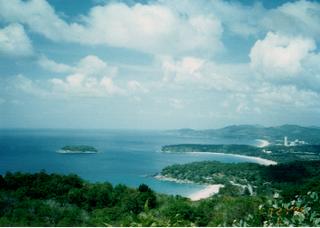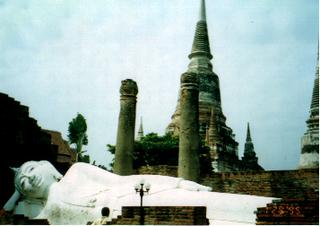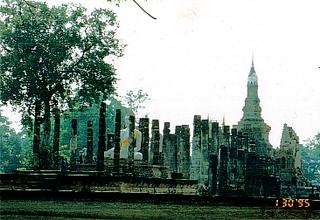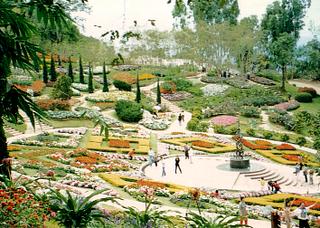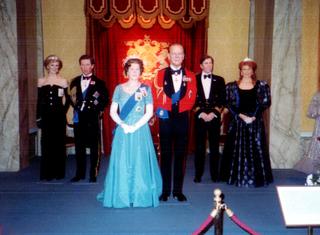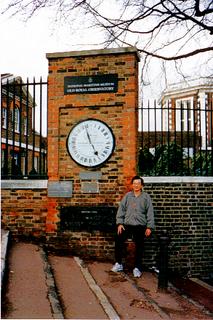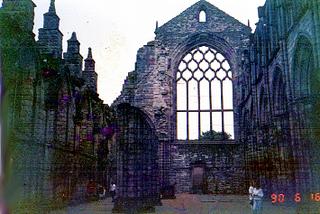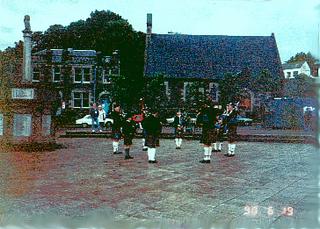(Published on soc.culture.sg on 20 September 2004, I include the aftermath wriiten in April 2005 at the end)
The writing was on the wall. And now the time it comes. MediaWorks is to "merge" into a new company called MediaCorp TV holdings Pte Ltd. The verdict is much more politically motivated than a commercial reason by looking at the deal.
Wrong use of word- merger
By merger, we means equal partners, there is no dominance of one party to another. Because of the profuse merger and acquisition in the eighties, many companies took advantage of acquisition in the form merger to boost revenues and prevent writing off goodwill in the profit and loss account. The Standard setting authorities since have tightened merger to very restrictive use.
By merger, we means equal partners, there is no dominance of one party to another. Because of the profuse merger and acquisition in the eighties, many companies took advantage of acquisition in the form merger to boost revenues and prevent writing off goodwill in the profit and loss account. The Standard setting authorities since have tightened merger to very restrictive use.
Clearly for the case of SPH and MediaCorp, IT IS NOT EQUAL.MediaCorp is holding 80% of share and is assigned to the management of the new company. In other words, it is dominant and should be accounted for as acquisition.
The implications of the verdict
It was said that the deal is win-win. I doubt so.
The winner-MediaCorp
It has been openly lashing out want to pin down its rival MediaWorks. And now it gets all what it wants:
It was said that the deal is win-win. I doubt so.
The winner-MediaCorp
It has been openly lashing out want to pin down its rival MediaWorks. And now it gets all what it wants:
1 Putting Channel U under its control, MediaCorp as management of the company can marshal all the resources, it has the ability to stultify or debilitate Channel U further development headlong.
2. Getting free cash resources 10 m from SPH while maintaining control. SPH owns 20% of the share; it was said SPH holds two, and MediaCorp holds three seats in the board.MediaCorp has the controlling interest in decision making.
3. Pulling SPH to invest in loss making business-Today.SPH is to pay 19.26m. SMRT has just gotten its foot out of the loss-making business-Today. MediaCorp has quickly roped in SPH to fill the vacancy, clearly MediaCorp is the winner.
The "betrayer"-SPH
It seems I use scathing word "betrayer" to describe SPH’s behavior towards MediaWorks.
Recently, I read a book, titled "The dark side of organization behavior" It says, "(In an organization) the psychological contract and its violation, unlike expectations, centers around ongoing exchange in a relationship..." "Within this relational context is the notion of trust..." "It is because breach and violation inherently take place in the context of a trusting relationship that its occurrence can be so damaging…"It says the first source of breach is reneging whereby purposeful breach occurs because the breaching party is aware of his or her obligation but is either unwilling or unable to fulfill some terms of the contract."
Recently, I read a book, titled "The dark side of organization behavior" It says, "(In an organization) the psychological contract and its violation, unlike expectations, centers around ongoing exchange in a relationship..." "Within this relational context is the notion of trust..." "It is because breach and violation inherently take place in the context of a trusting relationship that its occurrence can be so damaging…"It says the first source of breach is reneging whereby purposeful breach occurs because the breaching party is aware of his or her obligation but is either unwilling or unable to fulfill some terms of the contract."
In the same vein, MediaWork’s management and artistes were inspired to form a new station to pursue their goals which are different from MediaCorp. That made a serious dent in MediaCorp talent pool and subsequently affected their viewer rate in some of the programmes; the tussle of competition between the two stations is keen.
Some of the artistes are mortified that rationalization exercise can be political and vindictive.SPH attracted them when was in need. And eager to divest the lost making unit to stop bleeding, SPH throws back the ball to their ex-employer, MediaCorp; leaves their fate to their ex-boss, is a breach of psychological contract around ongoing exchange in a relation, a breach of trust.
SPH has legitimate reason to say four years of investment with no return, enough is enough. They have to put a full stop somewhere. It raise another question that where and how to attract investors who have deeper pocket and farther vision to struggle for success in the long haul in this industry may be a concern for searching new operator.
It is very clear that the major advantage is to get rid of MediaWorks, the loss-making unit.
It is not clear whether the purchasing of 20% interest for 10m is advancing shareholder value. First, from strategic perspective, it is hardly we can see any synergy advantages for purchasing the stake or strategy advancing SPH current core business. Second, I do not have financial details I can’t judge it is worth 10m.(The public available data for MediaCorp is up to 2002,from Thomson Investment and also MediaWorks financial data is lacking)
I am confounded by its investment in Today. Today is allowed to run independently. It pays 19m for 40% stake in Today to compete with its core business with no controlling interest. First, Today is running free sheets; Second, SPH is in cut throat competition with Today on advertising dollars. There are many business opportunities out there to pursue; it is unfathomable why pointing the gun shoot at its own foot? The 19m certainly can help SPH break through growth stagnant and expand regionally.
And since both sides decide not to compete, why not let the talents of Today absorb into SPH?
The loser-MediaWork
There are two critical aspects brought down MediaWorks.
First, It was born in the wrong time when the economy was in the down cycle.That greatly affected their only life blood-advertising revenues. During economic downturn, few companies are willing to make investment in advertisement.
And now the economy recovers, will it make a difference if MediaWorks rebirth? Possible! But it is tough. This industry carries very high fixed costs.
And now the economy recovers, will it make a difference if MediaWorks rebirth? Possible! But it is tough. This industry carries very high fixed costs.
Advertising revenues depend on several factors: first, the economic factor determines the consumers’ pocket, The propensity is to achieve marketing effectiveness to save marketing dollars in bad times; Second, putting up advertisement also depends on the advertisers’ margin, the type of product and sales volume; Third, A stable advertising revenue depends on strong advertisers and their consistent support. And there is a population size constraint.
Second, Weak business model-Advertising income also appears cyclical, fluctuate from month to month. Of course there are peripheral incomes, such as publishing magazine, programme selling, and big screen operation etc.The revenues are either small or unpredictable. To extricate from fluctuating revenue generation dilemma, we need a different business model.
What is the implication to general public? Will the future program becoming homogeneous and prosaic? I doubt so.
What is the implication to general public? Will the future program becoming homogeneous and prosaic? I doubt so.
Channel U has set their mark and in no small feat. Eventually is the viewer who decide which station to watch and there is quid pro quo-the cable TV compete for viewership.
The new management will want to prove themselves under the watchful eyes that they can do better for channel U than under the umbrella of SPH, converge into the style of MediaCorp production will not draw more viewership.Viewers are attracted by the style and content of the production, not the other way round.
The new management will want to prove themselves under the watchful eyes that they can do better for channel U than under the umbrella of SPH, converge into the style of MediaCorp production will not draw more viewership.Viewers are attracted by the style and content of the production, not the other way round.
What is the implication to Media artistes? Will they get short shrift or nit-picked? I doubt so.
Singapore has a small pool of TV artistes and production crews. Especially those who have already made their marks and proved themselves in the field are very much sought after avidly.
Vicariously, everyone is in the business and behaves businesslike and there is no personal grudge. It is only how you prove your value to the new company that matters. As I mentioned, the success of the new company only make the management shine, there is no reason to take personal revenge to impede business success.
Vicariously, everyone is in the business and behaves businesslike and there is no personal grudge. It is only how you prove your value to the new company that matters. As I mentioned, the success of the new company only make the management shine, there is no reason to take personal revenge to impede business success.
There are watchful eyes around, the rationalization exercise under the lead of independent director (Some question the effectiveness of so-called independent director, they are usually not the expert in the field, that restricts their function to question the CEO), probably weeds up only weak candidates. The question is how you define weak candidates, there will be political tussles.
Those who relish the kind of cosy, familylike working environment and culture in MediaWorks may be replaced by big organization bureaucratic culture. That may temper the MediaWorks’ staff passion.
The future of the industry
Time to cough golden eggs now and it is free, is free.
I think a more workable business model is to adopt "Pay as you watch" system, in the mean time scrap license fee and replace with leasing arrangements with operators.
I think a more workable business model is to adopt "Pay as you watch" system, in the mean time scrap license fee and replace with leasing arrangements with operators.
I think the authority must have been recouped its infrastructure costs by now. The authority calculates a price range to cap on the maximum price charge. The formula will take into account of current license fee, the maximum hours viewer watching, maintenance and repair charges of infrastructure and put a cap for maximum price, and review the price as required. The operator can charge viewer within the price range.
The biggest advantage of this model is to stabilize the income risk of the incumbents, making the survival more viable, because there is a large pool of subscribers paying a fixed fee to buttress the operators’ income, coupled with other revenues will be able to tide over any economic conditions. Competing for the pie also increase competition of the operators, eventually benefiting the viewers; but this is also a double-edge sword.
The authority will lease out their infrastructure to the operators, and charge leasing fee to cover maintenance, repair and replacements.
Consolidation should improve competition and improve viewing quality rather than whittle it. The verdict has a sobering effect need to elucidate: Profitability is one of the important consideration, but also other criteria such as how to nurture quality and promising new incumbent to ensure their survival to make the scene in this industry vibrant, and flourishing.
The Aftermath (Written on 7 April 2005)
Half a year has passed, from hindsight; many of my views elaborate in The Media Verdict proved to be withstanding the change of times. This article is not to inscribe something of an epic. Rather, I am writing of some new thinking I hope you will share.
MediaCorp:
MediaCorp is an organization inherited the government working culture. Rather through market competition. It moves ahead with finesse to make way to achieve its goals. After the acquisition, it was said in order to clear channel U old stocks.
During the period from 1 Jan 2005 to 1 April 2005, existing programs for channel U were asked to stop and there were no new programs on show, effectively, like going through austerity program in economics term. And many of the U channel artistes moved to channel 8 playing subordinate roles or sidelined. Forcing audience switched to watch channel 8. An article in Straits Times described channel U as MediaCorp "Stepchild". There are many discriminating practices are rooted on their competitive culture and certainly is not healthy for organization growth.
An April 2005 Harvard Business review article best describes this management practice. The article categorizes this practice as "opportunist". The author says, "It is characterized by mistrust, egocentrism, and manipulative. It focuses on personal wins and sees the world and other people as opportunities to be exploited. Their approach to the outside world is largely determined by their perception of control--in other words, how they will react to an event depends primarily on whether or not they think they can direct the outcome. They treat other people as objects or as competitors who are also out for themselves. Opportunists tend to regard their bad behavior as legitimate in the cut and trust of an eye-for-an eye world. They reject feedback. Externalize blame, and retaliate harshly. "
I said the media consolidation was politically motivated, rather than a commercial transaction.
1. The government wants the TV media strictly under their control. One interesting economics article describes this choice as "traditional economics arguments"; It says government involvement is basically for two reasons: political and social.
Regulation was designed to ensure that a sufficient range and balance of programs was provided on each television channel, alongside programs that catered for minority as well as for mass audiences. The one argument "government involvement primarily will be social policy", such as MediaCorp recent promoting marriage couples, procreation programs. "There is a question about whether an unregulated market will provide the same socially correct level of programming quality and innovation."
2. The main theme of this economics article said the broadcast landscape has been altered radically by the advent of satellite and cable broadcasters and digital programming. There has been a steady drift in general attitudes away from government intervention to free market provision
The economic arguments ("traditional economics arguments") for government intervention are the existence of market failures- -They are resulting from a freely-functioning market in broadcasting will not produce the socially desirable outcome. There are three main types of market failures according to the article:
Broadcasting is a public good (It means non-excludable, no one can exclude others from consuming. And consuming of the good by one person does not decrease the amount of the good left for everyone else. Basically, we are paying license fee to watch this public good, the regulator instead of using this pool of money to sponsor the operator to shoot programs that support the government policy).
It is not enough just to use the catch-phrase that public service broadcasting must "inform, educate and entertain". The author argues: why the free market, if left unregulated, will not inform, educate and entertain? As to "inform, educate and entertain", many will share with me that the trends of increasing government’s propaganda. After a stressful day work thinking of to unwind yourself, you may want to protest but to no avail to watch this government’s propaganda. Whether it is to put the cart before the horse?
Digitization means that television signals can be encrypted; pay channel like starhub makes TV no longer non-excludable though still non-rivalries.
The broadcasting market is inherently concentrated, leading to market power. The making and broadcasting of television programs has exceptionally high fixed costs (Once these expenses are paid, there are economic of scale) and very low marginal costs. Having a small number of firms in the market is efficient, in the sense that it avoids duplication of the large fixed costs required for broadcasting and uses the scarce spectrum without interference. The down-side is that a small number of firms can allow each firm to enjoy and exercise market power.
Market power leads to deadweight loss- -It means unexploited gains from trade that reduce the social surplus from producing a good. Just like MediaCorp is concerning making profit at the expense of viewer interests, such as repeat broadcasting old stuff many times. There is little the consumer can do because of the monopolistic nature unless increase competition or subscribe for pay channel. According to the article, there is considerable anecdotal evidence that competitive market structures are more innovative than are monopolies, although economicetric evidence on the general linkage between concentration and innovative is inconclusive.
Digitization allows channel to be limitless but fixed costs of program and broad casting under digitization are still enormous.
Consumption of broadcasting is subject to externalities. Externalities mean the spill-over effects that occur when the social costs and benefits derived from some activities are different from the costs and benefits derived by the producers and consumers of that activity. For example, program with a violent content has a negative effect of more violent in society. Another argument for subject to externality is individuals are imperfectly informed about the benefits from consuming the good, there is a danger that consumers will under-invest in the development of their own taste, experience and capacity to comprehend because it is only in retrospect that the benefits of such investment become apparent.
MediaCorp is keen to expand regionally. However, they are not ready for such an effort. Their immediate task is to continuing restructuring. The process includes assessing market segments-- local and overseas and followed by critically self-evaluating its core competency to ascertain the gap between market needs and current competency. For oversea programs there are more hurdles, such as cultural and political reception etc and of course program quality. Country has stronger culture, political and economic influence usually has the upper hand in terms of receptivity, such as Korean, Japan, and American.
Another aspect is to develop talent pool, as this industry basically depends heavily on people to perform. This requires a conducive environment that promotes creativity and technical excellence. To achieve this, a change of organization culture is imminent. A mix of technical and administrative experts is elected to the top echelon to balance technical and management excellence.
It can keep project management on top of every executive daily task. Other best practices to achieve operation excellence include:
Continue to source talent locally and overseas. Develop talents with star potential.
Consider instituting training programs to support continuous improvement initiatives.
Liaise with local university to set up courses, lifting the status of the profession and offering the artistes a career.
Institute performance measurement to align with the organization goals and improvement targets.
Promote team spirit, as many operations are project-based.
Use Activity-based management to control program budgets.
SPH:
As to SPH, it eventually lopped off loss-making MediaWorks. However, their share performance is still lackluster. Analyst is not convinced of the company’s advertising revenue potentials. The characteristics of SPH are
It is a large cash hoard with no investment opportunities.
It is monopolistic housing many papers publication under one roof. On the one hand, it achieves economic of scale by sharing the fixed assets and updating the latest technology. It also promotes certain extent of internal competition among the evening papers. Basically are the Chinese papers Sin Ming daily competes with Lian He Wan Pao. As to Lian He Zhao Pao, the Chinese morning paper and Straits Times face little competition. Until lately the new comer "Today" a free sheet which gives close fight to Straits Times in term of advertising revenue. Sitting on the cash hoard, the company faces little motivation to improve operation efficiency to improve shareholder value.
There are restrictions facing the company to expand regionally. Basically, The Company publishes Chinese, English, Malay, and Indian language papers. It is difficult if not impossible for them to put their foothold in the region because media is under local government control. If you can’t liberalize your paper at your own home, it is hard to convince the host country to accept your investments. I should say this practice is universal. The difference is internal competition.
What SPH can do is to:
Redefine it business boundary. They are not in the paper business. They are in publishing business, looking for adjacent business opportunities. This will give more business scope.
Restructure existing business, spin-off unprofitable businesses through buy out, implement share services charge out system rather than cross subsidies to promote operation efficiencies.


